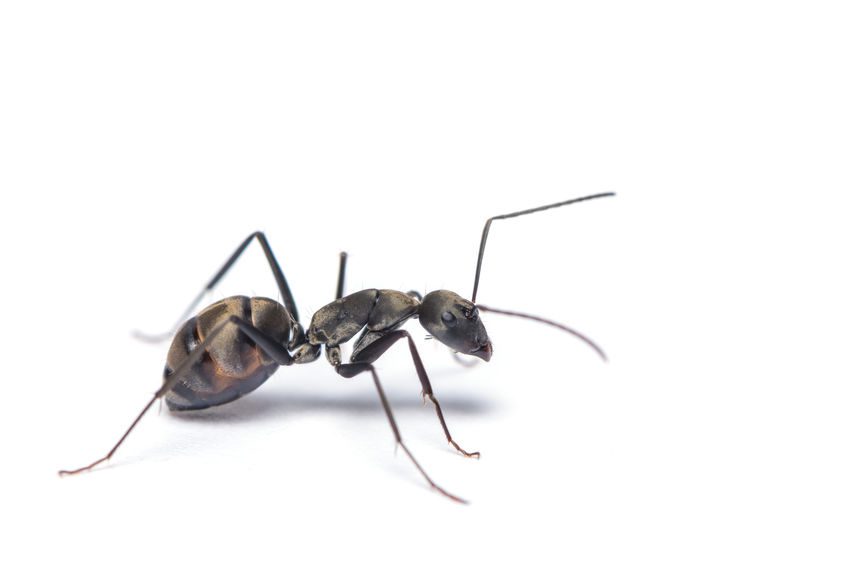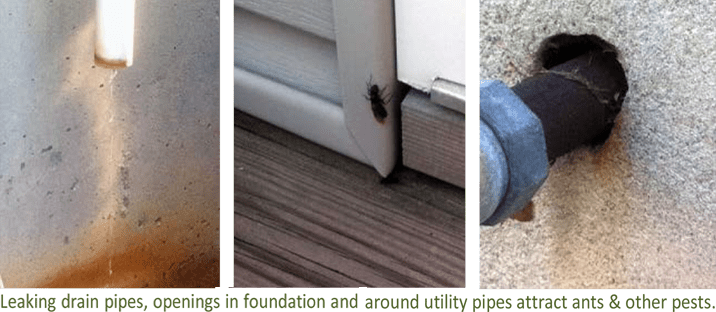Identification and Life Cycle
Carpenter ants are also known as the Genus Camponotus, which are part of the family Formicidae (ants). Carpenter ants vary in size and color (black, brown or reddish), but are normally large and blackish and are either wingless (workers) or winged. A winged carpenter ant can sometimes be mistaken for a termite. The “workers” are wingless and are a dark shiny brown to black color, 1/4 to 1/2 inch in length. The winged carpenter ant resembles the workers in color and shape but are longer in length at up to 3/4 inch long.
A colony of carpenter ants does not usually produce winged males and queens (queens are the productives), until it is several years old and has approximately 2,000 to 3,000 workers. About 200 to 450 winged ants can develop in the summer months and then hibernate within the nest through the winter. The winged males and females then come out from their colonies on warm days in the spring and early summer.
The development from an egg to a worker ant, can take up to 60 days. The queen’s only function is to lay eggs. The adult worker gathers food, maintains and defends the nest as well as tending to the eggs, larvae and pupae. Some species produce eggs, which are eaten by the queen and workers. Carpenter ants are capable of biting or stinging people, but are not poisonous and do not carry disease.





Comments are closed.